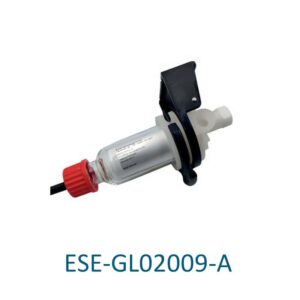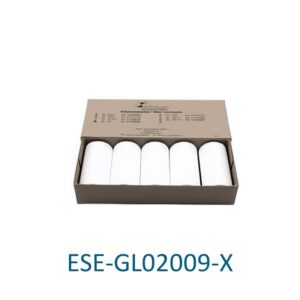Call
WhatsApp
Mail
Even when particle filters inside the gas sampling probe remove contaminants at the extraction point, long or branched sample gas lines still face a high risk of secondary contamination. To safeguard sensitive system components, users typically install additional filters at the gas inlet of the analysis system and upstream of precision equipment.
Bühler’s AGF-PV-30 sample gas filter series directly addresses this challenge. We engineered these filters with corrosion-resistant, non-absorbent PVDF and glass housings for maximum durability and purity. The Bühler Unique quick-release fastener allows fast, tool-free maintenance, while the modular head design includes an extra port for optional moisture detection. These filters accept a wide range of filter elements, making them adaptable to various industrial applications.
Even after you filter particles at the sampling probe, contaminants can sneak back into long or branched sample gas lines. To prevent this, professionals install an extra filter right where the gas enters the analyzer, especially before sensitive components. These filters must be made of corrosion-resistant, non‑absorbent materials, be easy to install, maintain, and support multiple filter media.
Bühler’s Model K-AGF-PV-30-A delivers on all fronts. We crafted the housing from durable PVDF and glass and equipped it with our Unique quick‑release fastener for tool-free service. We also built in a G¼ connection for adding a moisture detector or bypass line. Choose from several material options to match your application’s chemical or environmental demands.


Even after you filter particles at the sampling probe, contaminants can sneak back into long or branched sample gas lines. To prevent this, professionals install an extra filter right where the gas enters the analyzer, especially before sensitive components. These filters must be made of corrosion-resistant, non‑absorbent materials, be easy to install, maintain, and support multiple filter media.
Bühler’s Model K-AGF-PV-30-A delivers on all fronts. We crafted the housing from durable PVDF and glass and equipped it with our Unique quick‑release fastener for tool-free service. We also built in a G¼ connection for adding a moisture detector or bypass line. Choose from several material options to match your application’s chemical or environmental demands.

Measuring carbon dioxide (CO2) is important for understanding the role it plays in the environment and its effect on climate change. CO2 is a major component of Earth’s atmosphere, and it traps heat like a blanket, causing global temperatures to rise. Too m uch CO2 can lead to drastic changes in our weather patterns and ecosystems, so monitoring its levels is essential for predicting future climate conditions. Additionally, measuring CO2 can help us better understand our impact on the environment and make informed decisions about how to reduce emissions and slow down down down down down global warming. By analyzing CO2 data over time, we can develop strategies to mitigate the effects of climate change and ensure a sustainable future.
Before industrialization, the global average annual atmospheric carbon dioxide concentration was 278ppm (1ppm is one part per million). In 2012, the global annual average atmospheric carbon dioxide concentration was 393.1ppm. By April 2014 , the monthly average carbon dioxide concentration in the northern hemisphere atmosphere exceeded 400ppm for the first time. . 2. Global climate warming, the continuous aggravation of the atmospheric greenhouse effect leads to global climate warming, resulting in a series of global climate problems that cannot be predicted by today’s science. According to the International Climate Change Economics Report, if human beings maintain the current way of life, by 2100, there will be a 50% chance that the global average temperature will rise by 4°C.
Copyright © 2023 esegas.com, All rights reserved.


Enviro Solutions Technology Co., Ltd (ESE Technology) is a gas analyzer manufacturer and leading provider in ODM/OEM services for gas analysis systems used by international famous brands.
We will contact you within 1 working day, please pay attention to the email with the suffix “[email protected]” .
We’ll send you the catalog as soon as you submit your email